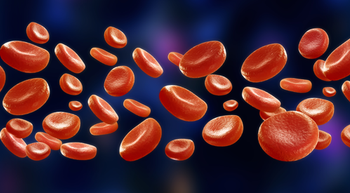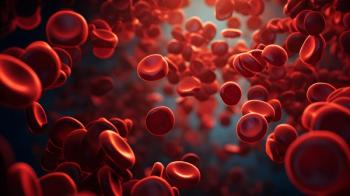
Acupuncture-Like Treatment Shows Promise for Relief of Radiation-Induced Dry Mouth
A twice-per-week, 20-minute, acupuncture-like nerve stimulation treatment may help to relieve the symptoms of radiation-induced xerostomia (dry mouth).
Raimond K.W. Wong, MBBS
A twice-per-week, 20-minute, acupuncture-like nerve stimulation treatment may help to relieve the symptoms of radiation-induced xerostomia (dry mouth), according to results of a clinical trial conducted by the Radiation Therapy Oncology Group (RTOG).
The findings of the phase II/III study, published in the June issue of the International Journal of Radiation Oncology, Biology, Physics, suggest that the technique is equally effective as the oral medication pilocarpine and better tolerated.
Multiple previous studies using needle acupuncture supported the potential of this therapeutic approach for radiation-induced dry mouth, an adverse event (AE) that has proven challenging to treat but can seriously impact a patient’s nutrition and well-being, noted the RTOG study’s lead author Raimond K.W. Wong, MBBS, in a statement.
Wong, a radiation oncologist at McMaster University in Hamilton, Ontario, added that “oral pilocarpine and similar medications are not well tolerated due to various side effects, including sweating, diarrhea, frequent urination, and dizziness.”
In this phase of the RTOG 0537 trial, investigators compared pilocarpine with an approach known as ALTENS, whereby electrodes are placed on the skin at preselected acupuncture points to deliver low-frequency, high-intensity pulses. Prior phase II results with ALTENS showed that the method yielded a positive response in patients for the treatment of xerostomia—findings which led to the phase III multicenter trial reported here, which evenly randomized 146 patients at 13 US and Canadian cancer centers to receive either two, 20-minute ALTENS sessions each week for 12 weeks or 5 mg oral pilocarpine three times daily for 12 weeks.
Eligible patients had completed radiation therapy with or without chemotherapy 3 months to 2 years prior to enrolling in the study with no evidence of recurrence and had grade ≥1 xerostomia based on CTCAE v.3 criteria.
Patients’ xerostomia symptoms were assessed at baseline and at 4, 6, 9, and 15 months after randomization using the University of Michigan’s Xerostomia-Related Quality-of-Life Scale (XeQOLS), a patient-reported 15-item instrument that measures four domains: physical functioning, pain/discomfort, personal/psychologic functioning, and social functioning. Patient responses to all four domains were averaged, and the total scores ranged from zero to four with an increased xerostomia burden indicated by a higher score.
Nine months after randomization, 96 patients across both arms were eligible for analysis. Sixty-eight of the 73 patients in the ALTENS arm and 53 of 73 patients in the pilocarpine arm completed >85% of their treatments.
The mean baseline XeQOLS score was slightly lower in the ALTENS arm (1.5) compared with the pilocarpine cohort (1.7). These scores were subtracted from the follow-up XeQOLS scores, and a negative change would mean improvement in xerostomia burden.
At the 9-month follow-up (the study’s primary endpoint), the median change in XeQOLS score was -0.53 for patients in the ALTENS arm versus -0.27 for patients in the pilocarpine arm. At the 15-month follow-up, the median change in XeQOLS score was -0.60 for patients in the ALTENS arm and -0.47 for patients in the pilocarpine arm.
Median change in XeQOLS scores consistently improved for patients in the ALTENS arm; however, none of the differences were statistically significant. The proportions of patients who had 20% or more improvement from their baseline XeQOLS scores were consistently higher in the ALTENS arm, and the difference was significant at 15 months from randomization.
One grade 3 adverse event (headache) was reported in the ALTENS arm, and two grade 3 AEs (dry mouth and blurred vision) in the pilocarpine arm. In the ALTENS arm, 20.9% of patients reported nonhematologic AEs of grade ≤3 versus 61.6% in the pilocarpine arm. At the 9-month follow-up, there was no significant difference in the highest grade of AE related to treatment between the two arms.
While study authors noted that the effect of ALTENS was smaller than expected, Wong said the phase III results indicate that the needleless acupuncture ALTENS “could provide an alternative treatment option that has fewer side effects and, in turn, helps improve quality of life for patients with radiation-induced xerostomia.
“Some patients in the ALTENS group demonstrated lasting response and indicated the possibility to induce salivary gland tissue regeneration. Randomized, controlled, placebo trials are necessary to confirm ALTENS’ treatment efficacy for painful, radiation-induced dry mouth, a debilitating condition for many patients.”
Wong RK, Deshmukh S, Wyatt G. Acupuncture-like transcutaneous electrical nerve stimulation versus pilocarpine in treating radiation-induced xerostomia: results of RTOG 0537 phase 3 study. Int J Radiat Oncol Biol Phys. 2015;92(2):220-227.
Newsletter
Knowledge is power. Don’t miss the most recent breakthroughs in cancer care.

















































































